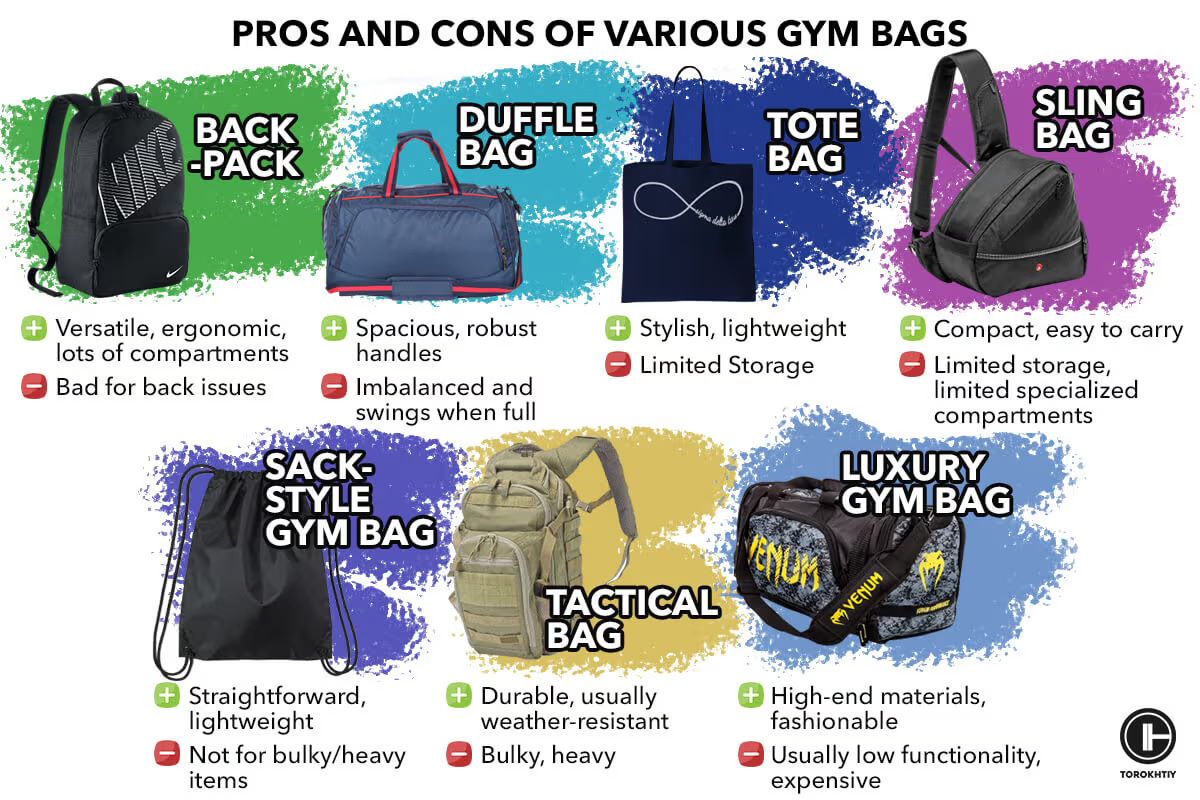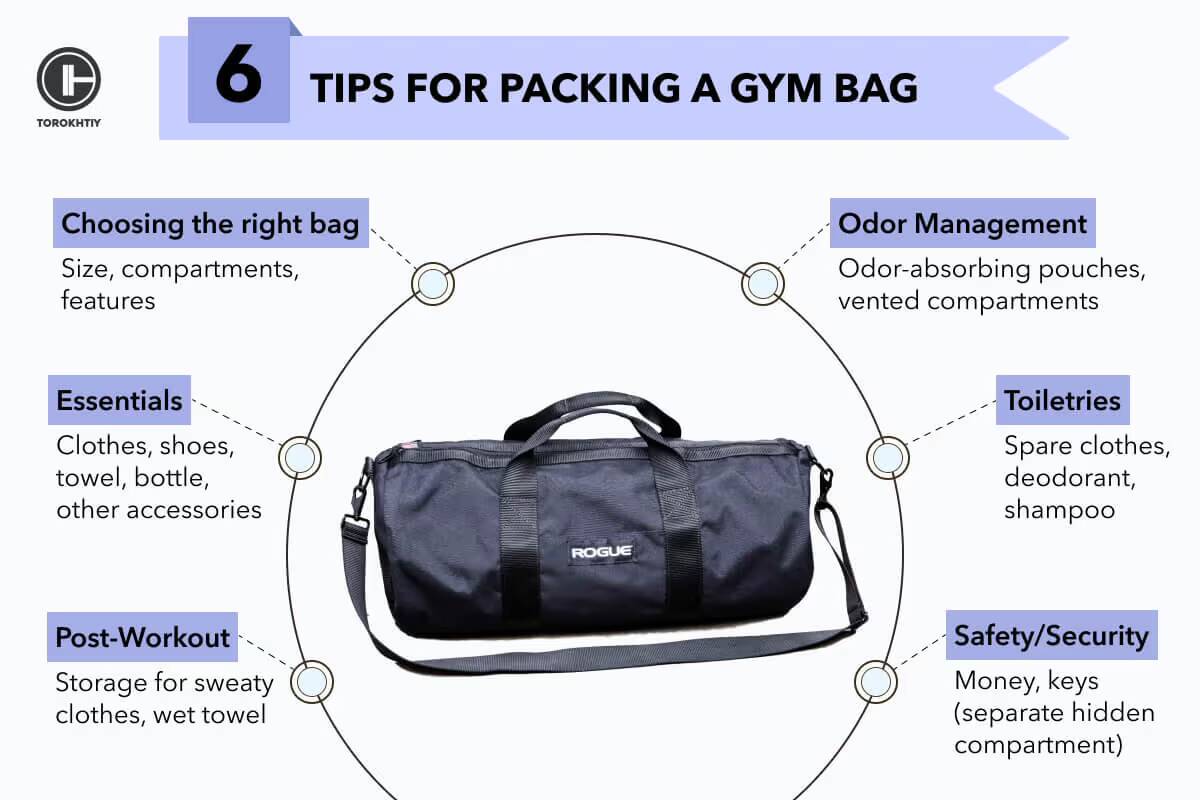Finding the right gym bag can be frustrating. You need something durable enough to withstand daily use, spacious enough to hold all your gear, and comfortable enough to carry. If you’re tired of wrestling with ill-fitting bags and struggling to find your essentials, a well-chosen gym bag can make all the difference. This guide will walk you through everything you need to consider to find the perfect bag for your fitness lifestyle.
This comprehensive guide goes beyond just listing bags. We’ll cover different types of gym bags, essential features to look for, material considerations, size and capacity, and even specific recommendations based on your workout routine. By the end of this article, you’ll be equipped with the knowledge to confidently choose a gym bag that meets your needs and simplifies your trips to the gym.
Types of Gym Bags

- Duffel Bags: The classic choice, known for spacious interiors and simple designs. Often feature a single main compartment and carrying straps.
- Backpacks: Offer hands-free convenience and distribute weight more evenly. Many gym backpacks include specialized compartments for shoes, wet clothes, and water bottles.
- Hybrid Bags: Combine features of duffel bags and backpacks, offering versatility and comfort. These often have backpack straps that can be stowed away.
- Tote Bags: Lightweight and easy to carry, but typically less durable and spacious than other options. Best for minimalists or light workouts.
- Rolling Gym Bags: Ideal for those who travel long distances or prefer not to carry heavy loads. Feature wheels and a telescoping handle.
Essential Features to Look For

Compartments & Organization
A well-organized gym bag is a lifesaver. Look for bags with:
– Separate Shoe Compartment: Keeps dirty shoes away from clean clothes.
– Wet/Dry Compartment: Essential for storing sweaty clothes or towels.
– Multiple Interior Pockets: For organizing small items like keys, phones, and wallets.
– Exterior Water Bottle Pockets: Easy access to hydration.
Durability & Materials
The material of your gym bag greatly impacts its lifespan. Consider these options:
– Polyester: Affordable, lightweight, and water-resistant. A good all-around choice.
– Nylon: More durable and abrasion-resistant than polyester, but also more expensive.
– Canvas: Stylish and durable, but can be heavier and less water-resistant.
– Reinforced Bottom: Prevents wear and tear from frequent placement on the ground.
Comfort & Convenience
- Padded Straps: Essential for backpack-style bags to distribute weight comfortably.
- Sturdy Handles: For easy carrying by hand.
- Ventilation: Allows air circulation to prevent odors.
- Water Resistance: Protects your belongings from rain and sweat.
Size and Capacity – How Much Space Do You Need?

| Workout Type | Recommended Capacity | Key Considerations |
|---|---|---|
| Light Workouts (Yoga, Pilates) | 20-30 Liters | Yoga mat strap, change of clothes, water bottle, small towel |
| Regular Gym Workouts (Weightlifting, Cardio) | 30-50 Liters | Workout clothes, shoes, towel, shaker bottle, lock, toiletries |
| Sports (Basketball, Soccer) | 50-70 Liters | All of the above, plus a ball, extra uniform, and possibly protective gear |
| Long Trips/Overnight Stays | 70+ Liters | All of the above, plus toiletries, pajamas, and potentially a change of shoes |
Pro Tips for Choosing the Right Gym Bag
- Consider your commute: If you walk, bike, or take public transport, a backpack might be the most convenient option.
- Think about your workout routine: Different activities require different gear, so choose a bag that can accommodate your specific needs.
- Don’t overspend: You don’t need the most expensive bag on the market to get a quality product. Focus on features and durability.
- Read reviews: See what other users have to say about the bag’s performance and durability.
- Check the warranty: A good warranty can protect you against defects and ensure your investment.
- Pack a small first-aid kit: Include bandages, antiseptic wipes, and pain relievers for minor injuries.
- Use packing cubes: Keep your belongings organized and compressed within the bag.
When to Consider Professional Help
Sometimes, finding the perfect gym bag can feel overwhelming. If you’re struggling to narrow down your options, consider:
- Visiting a sporting goods store: A knowledgeable salesperson can provide personalized recommendations.
- Reading expert reviews: Websites like GearLab and Verywell Fit offer in-depth reviews of various gym bags.
- Seeking advice from gym buddies: Ask your fellow fitness enthusiasts what they recommend.
FAQ
Q: What’s the best material for a gym bag?
A: Nylon is generally considered the most durable and water-resistant material, but polyester offers a good balance of affordability and performance.
Q: How big of a gym bag do I need?
A: It depends on your workout routine and the amount of gear you need to carry. Refer to the size and capacity guide above.
Q: Is a gym backpack better than a duffel bag?
A: It depends on your preference. Backpacks offer hands-free convenience, while duffel bags are typically more spacious.
Q: How do I prevent my gym bag from smelling?
A: Use a wet/dry compartment for sweaty clothes, ventilate the bag regularly, and consider using odor-absorbing pouches.
Q: Are rolling gym bags worth it?
A: If you travel long distances or have trouble carrying heavy loads, a rolling gym bag can be a lifesaver.
Alternative Solutions

If a dedicated gym bag doesn’t fit your needs, consider these alternatives:
| Solution | Pros | Cons | Best For |
|---|---|---|---|
| Large Tote Bag | Affordable, lightweight, easy to carry | Limited organization, less durable | Minimalists, light workouts |
| Convertible Backpack/Duffel | Versatile, comfortable, adaptable | Can be bulky, potentially more expensive | Those who want options |
| Hiking Backpack | Durable, spacious, comfortable | May be too large for gym use, lacks specialized compartments | Hikers who also go to the gym |
Enjoy Your New Gym Bag!
You’ve now equipped yourself with the knowledge to choose a gym bag that perfectly suits your lifestyle. Remember to consider your workout routine, prioritize essential features like compartments and durability, and select a size that meets your needs.
Here’s a quick recap:
– Identify your workout needs.
– Choose the right bag type.
– Prioritize durability and organization.
– Consider comfort and convenience.
With the right gym bag, you can streamline your trips to the gym and focus on achieving your fitness goals.
What are your must-have features in a gym bag? Share your thoughts in the comments below!




